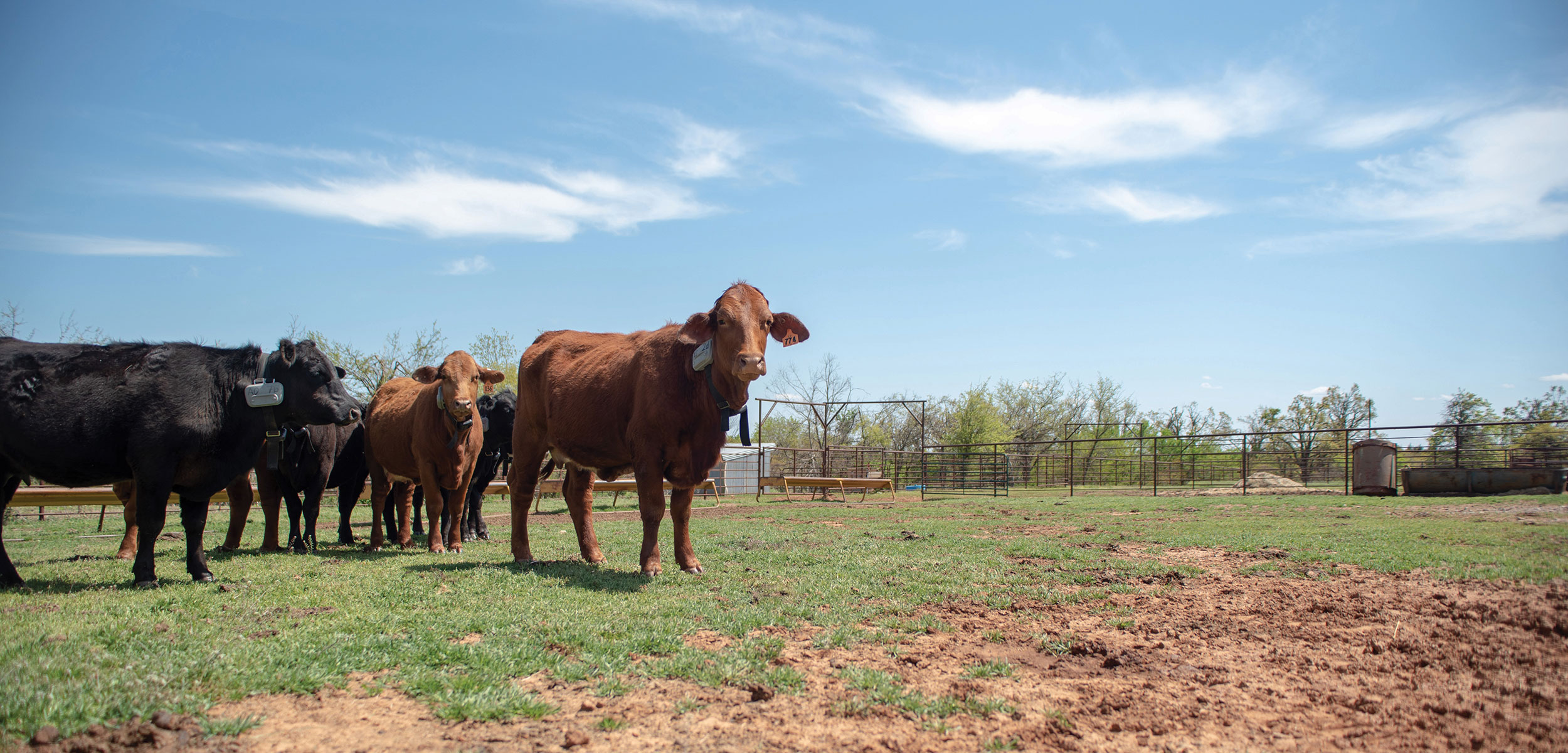
Don't Fence Me In
Thursday, June 10, 2021
Media Contact: Samantha Siler | Communications and Marketing Manager | 405-744-2977 | samantha.siler@okstate.edu
The long days of building and fixing fence may soon be over. Virtual fencing allows ranchers to put up fence from the comfort of their own homes.
The concept of virtual fencing first sparked an interest with Ryan Reuter and Laura Goodman about four years ago as a way to practice rotational grazing with no physical barriers.
Reuter, Oklahoma State University associate professor of animal and food sciences, researches beef cattle management and facilitates the Blue Stem Research Range where a virtual fencing pilot project is being conducted.
In the current research project, Reuter and Goodman use collars to control and track
cattle behaviors
in response to virtual fencing, said Goodman, assistant professor in the OSU Department of Natural Resource Ecology and Management.
“When the animal approaches a boundary where it’s not supposed to be, the collar will beep at the animal,” Reuter said.
Virtual fencing operates through a GPS system the cattle wear around their necks, similar to a dog collar, Reuter said.
The GPS system allows Reuter and Goodman to program the collars for where they want the cattle to graze for a certain period of time.
Cattle have responded to the sound well, Reuter said.
On occasions when the cattle do not respond to the sound, “the collar gives an electronic stimulus to encourage the animal to stay in the area it’s supposed to be in,” Reuter said.
Reuter and Goodman work with Todd Parker, director of product and programs for Vence Inc., to conduct this project. Vence Inc. provides the technology needed for Reuter and Goodman to conduct their research.
Right now, about 50 cows are being used for this project, Reuter said, and he plans to expand in the future. This technology has allowed Reuter and Goodman to come up with several ideas they hope to implement over time, he added.
Goodman would like to experiment by concentrating the cattle to certain areas of the pasture to make for grazed fire breaks, she said.
These fire breaks would protect land the cattle are grazing from wildfires without the use of heavy equipment like a bulldozer or mower, she added.
“We could create fire breaks to help control the spread of fires and protect critical structures,” Goodman said.
Virtual fencing also can keep cattle away from the sensitive areas in the pastures, like creek banks and ponds, to protect those areas from too much animal activity, Reuter said.
Kevin Wagner, OSU Oklahoma Water Resources Center director, plays an important role in this pilot project, as well.
Wagner received a grant from the Environmental Protection Agency to fund the next steps in the virtual fencing project.
“Putting in permanent fence to protect a riparian area can be a real issue for some landowners,” Wagner said.
Riparian areas include the banks of the river or the area between the land and any adjacent waterways, Wagner said.
Floods along with other natural disasters can take these fences out, Wagner added.
Virtual fences allow ranchers to keep their cattle where they’re supposed to be even if these disasters occur, Wagner said.
When it comes to grazing management, most ranchers use electrical wire or permanent fence to cross fence their pastures, Wagner said. This means cattle have to be physically moved from one paddock to the next, he added.
“Virtual fencing allows ranchers a hands-off approach to achieve their grazing goals,” Wagner said.
While the advantages of using a virtual fence are substantial, learning how to use this technology comes with a curve, Reuter said.
With all the technology involved, planning ahead is crucial for this project to be successful, he added.
Moving forward in the project, Reuter plans to expand not only the number of cows but also the acreage they graze, he said.
Goats may be a primary target in expanding this technology into other species, he added.
“Goats are notoriously hard to contain with physical fencing, and we would like to use them in Oklahoma to really focus on some of our invasive species of weeds,” Reuter said.
Reuter, Goodman and Wagner have high hopes for the future of this project, Wagner said.
As the project is only a year old, they plan to continue expanding their team so they can expand the research that goes along with it, Reuter said.
Story By: Carly Gump | Cowboy Journal
